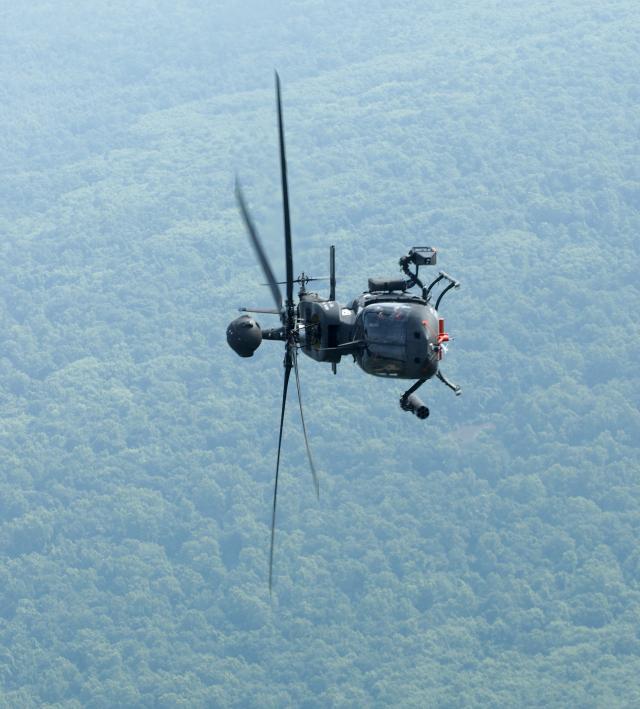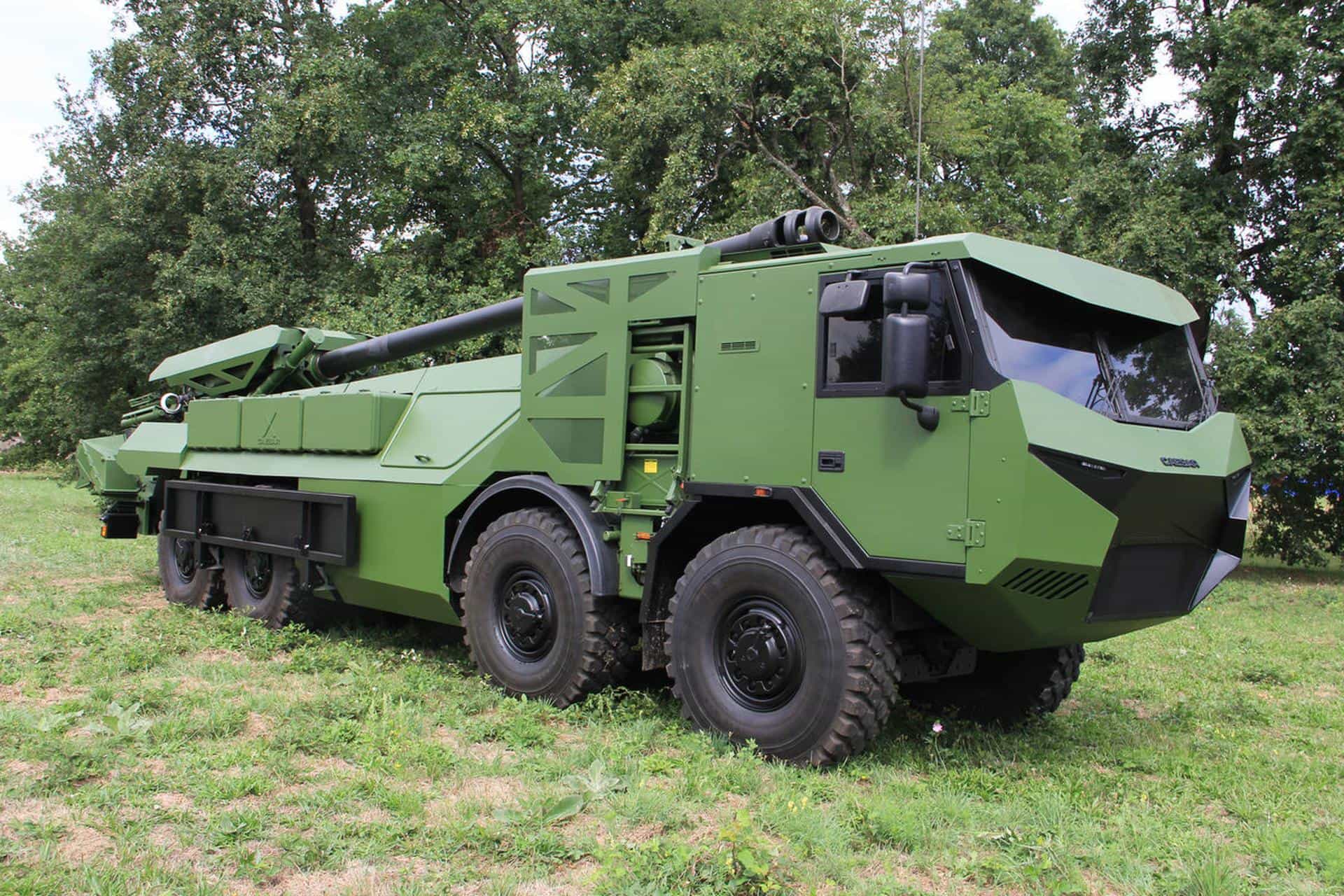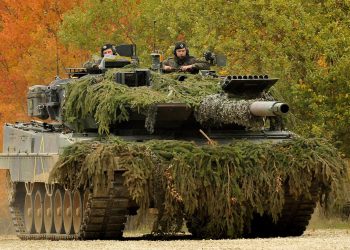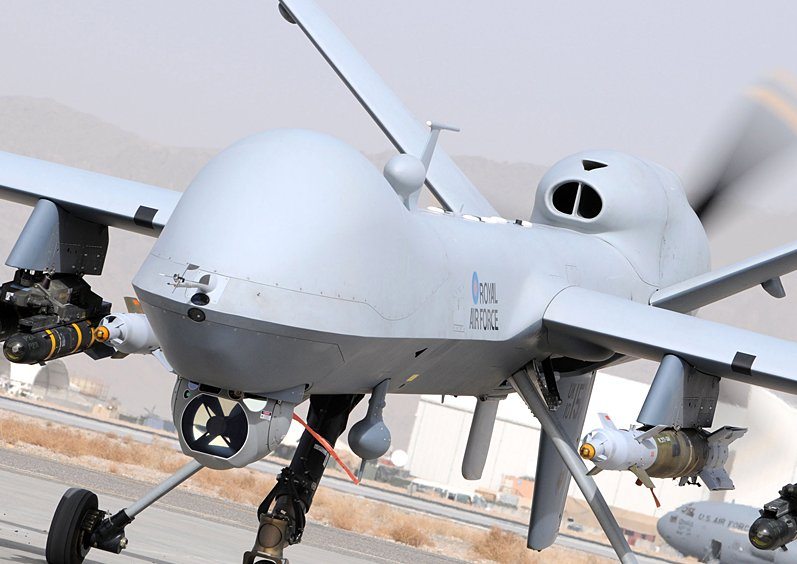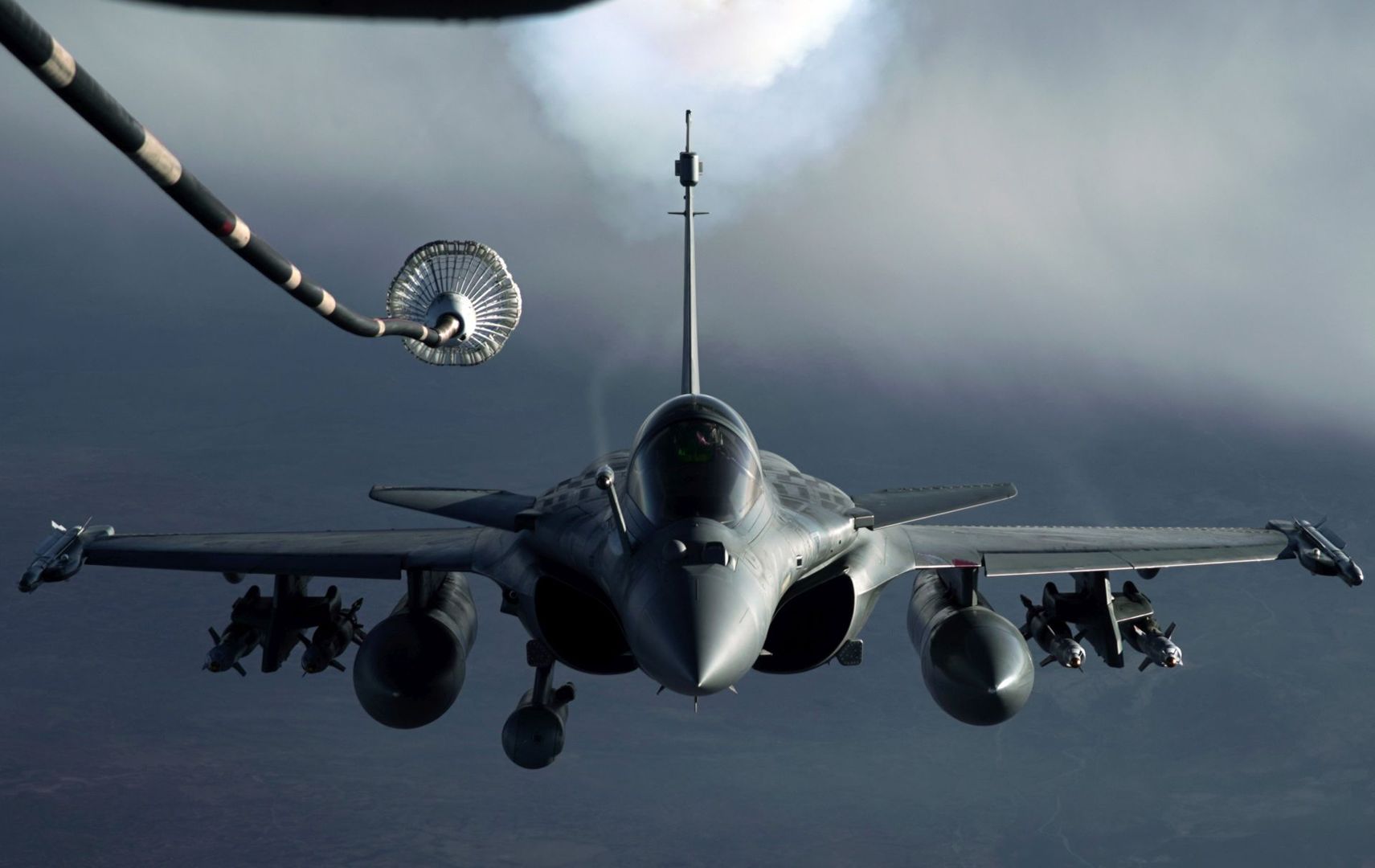Apache helicopters, teamed with Gray Eagle and Shadow unmanned aerial vehicles, are a winning combo, according to Col. Thomas von Eschenbach.
Apache AH-64E models, teamed with unmanned aerial vehicles, known as UAVs, are now increasingly performing the armed aerial scout missions, once performed by Kiowa helicopters, and, Eschenbach said, they’re doing a fantastic job.
Eschenbach, who is the capabilities manager, U.S. Army Training and Development Command, unmanned aircraft systems, spoke for a few minutes at the two-day Army Aviation Association of America, known as Quad A, 2014 Mission Solutions Summit at the Gaylord Opryland Hotel, Monday. Then he opened up his “Future Manned/Unmanned Teaming” session for questions and comments from aviators.
One Kiowa Warrior pilot who flew combat missions said Kiowa pilots were “successful despite the platform,” meaning the Kiowa was not the optimal helicopter for the battlefield. “The enemy let us get that close,” he added.
Kiowa helicopters are being divested from the Army’s inventory under the Army’s Aviation Restructuring Initiative, known as ARI.
Some Kiowa pilots think they’re being replaced by Shadow UAVs. “They’re not,” he said. “Kiowas are being replaced by Apaches.”
ARI has given the aviation community the needed impetus to make Apaches team with UAVs, said Eschenbach, also a former Kiowa pilot, adding “It was absolutely the right thing to do.”
Eschenbach said at one time UAVs fell under the control of military intelligence, but now the Army is moving as many as it can and as rapidly as it can into brigade combat teams and combat aviation brigades. The ARI aircraft divestment strategy has freed up the money to make that happen.
The Army is upgrading its Apache fleet to the E models, which are the ones that can be teamed with UAVs because of their higher level of sophistication, he said.
The Army is halfway through fielding MQ-1 Gray Eagles and beginning next year, Eschenbach expects the new M2 Shadows to begin fielding, replacing the Shadow 200 RQ7B Version 2.
Stephen Greene, vice president of business development for Textron Systems’ Unmanned Systems, who was attending Quad A, said the M2 Shadow is now in development and doing flight demonstrations for U.S. and allied countries.
The M2 Shadow has 80 percent commonality with Shadow 200 now in the inventory, he added, meaning that it will have full compatibility when teamed with Apaches and the older Shadows.
The most significant difference between the two Shadow models is the center fuselage which gives M2 Shadow a lot more range and loiter-on-target time, Greene said. The other M2 Shadow advantage is a dual payload capable vice single payload that Shadow 200 had.
To sum it up, he said the M2 Shadow offers “strategic capability at a tactical platform level; so you’re able to incorporate multi-mission capabilities, higher endurance and other benefits into the existing Shadow system.”
Shadow, used at the brigade level, is smaller than Gray Eagle, which is used at division and higher levels. Less size means less range and payload, but lower price as well.
“One of the things that’s happening in the industry is that Moore’s Law is taking hold on the payloads and driving the same capability or better into smaller packages to bring payloads onto air vehicles like this,” Greene said, meaning the Shadow will increasingly be able to deliver video and munition on targets as weight goes down.
The Moore’s Law analogy he used refers to Gordon Moore’s 1965 analysis of computing power doubling every two years. His “law” proved accurate over time as computers got faster and could store more data.
HOW TEAMING WORKS
Lt. Col. Ed Vedder’s battalion in the 1st Infantry Division, was the first to demonstrate teaming between AH-64Es and Gray Eagles. He explained teaming during the session.
While the Apaches have pilots in the cockpit, the UAVs are piloted by soldiers — usually enlisted — on the ground in universal ground control stations, he said.
If request is made by an Apache pilot to take temporary control of the UAV or UAVs, that can happen, Vedder continued, but if or when it’s done, it’s normally for just a brief period of time.
Both UAV and Apache pilots train together and work together so the handoff and hand-back of control is seamless, he said.
“It’s very intuitive (for an Apache pilot) to fly the Grey Eagle,” Vedder continued. The pilot just “draws up some wave points then asks for level 4 control. Once he gives you that authority you can send that aircraft down a route, select intelligence, speed, orbit, and when it hits a checkpoint, you can say ‘I’m going to look at this grid’ and a sensor will do that.
“The rest of time, the pilot is operating his Apache,” Vedder said. “It’s not as complicated as it may seem. It’s a powerful capability.”
Vedder added that the pilot can launch missiles from the UAVs and direct them without information overload. His pilots were executing missions with UAV operators “comfortably” after just eight hours of simulation and four hours of live training.
However, he added that ground operators do so well that Apache pilots will usually just let them operate the UAV, and the relationship established between them is excellent.
When Vedder spoke of level 4, he was referring to the Apache pilot’s level of interoperability, or LOI, over the UAV. While the ground operator always has all five levels of control, the Apache pilot can request a particular level.
LOI 1 is indirect receipt of UAV payload data, meaning not much interaction; LOI 2 is when the pilot has direct receipt of UAV payload data and is in direct communication with the UAV; LOI 3 is where the Apache pilot can actually fire a UAV missile; LOI 4 turns flight control over to the Apache pilot; and LOI 5 covers the full spectrum of flight, including launch and recovery.
Besides carrying missiles and cameras, the UAVs also have lasers that can pinpoint targets to manned pilots. One pilot said he used three UAVs to triangulate on a target and called in an air strike from Air Force jets to take out the target.
Another tactic, he said, is for the Apache pilot to sit behind a mountain, let the UAVs go forward and find the targets, with the pilot then lunching his missiles over the mountain.
A third tactic is for the Apache pilot to simply sit in his helicopter on the flight line and wait for the UAVs to get to the target area, recon the area, and then the Apache can swoop in with its superior firepower. The advantage is the Apache pilot doesn’t need to waste time and fuel trying to acquire the target and doesn’t put himself in danger while doing so.
Another pilot said there’s a value in letting the ground controller pilot the UAV. Not only are they professionally trained and indoctrinated into the tactics and mission, he said they also are “not chasing every shiny object,” meaning they’re on task, not distracted from the surroundings and are more focused.
Not all is roses with manned-unmanned teaming.
One pilot from Joint Base Lewis-McChord, Wash., said his unit doesn’t do manned-unmanned training because of airspace restrictions in his area. Those restrictions are enforced by the Federal Aviation Administration, or FAA.
Until the military and the FAA can work things out, he offered that the only path forward is training on simulators. The Army now has about 90 such simulators, and will soon acquire about 100 more to distribute throughout the service.
While manned-unmanned teaming will be done by Apaches, one aviator said in the old days, meaning 2004, he saw teaming done using Black Hawk helicopters with UAV operators in the back, and making it all work.
Eschenbach said that to his knowledge there aren’t any plans to continue that line of effort, but that a lot of things have been tried along the way.
Vedder concluded that while UAVs may now be all the rage, he doesn’t expect them to replace manned aircraft anytime soon. It’s an exciting time to be a young captain in Army aviation, he added.

